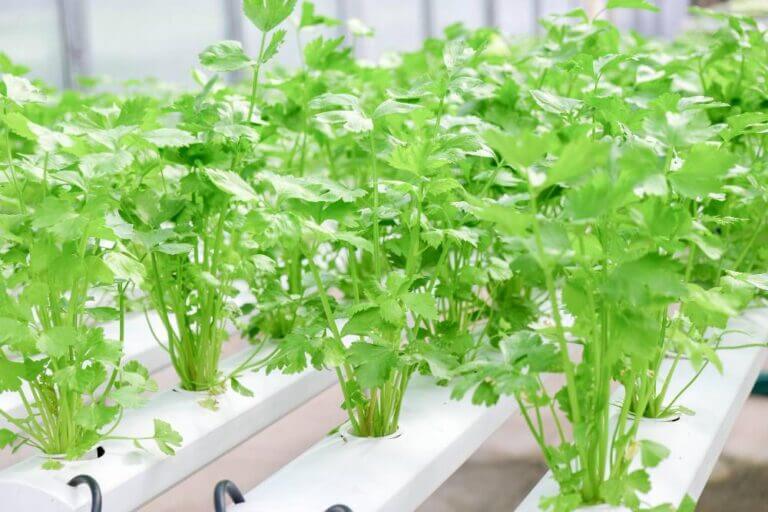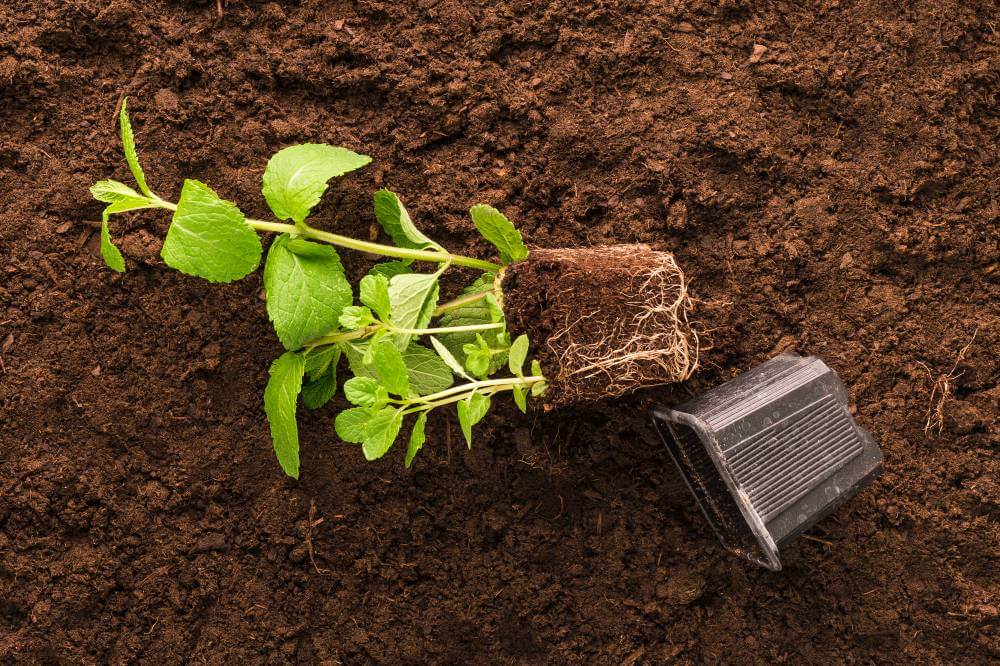Hey there! Today, we’re diving deep into the fascinating world of hydroponic herb gardening. Hydroponic gardening, for those new to the concept, is a method of growing plants without soil, using a nutrient-rich water solution instead. It’s like giving your herbs a luxurious spa treatment, right in your own home!
Must-have components for hydroponic planting
To kickstart your hydroponic herb garden, you’ll need a few key items. Now, let’s delve into each of these components:
- Nutrient Solution: This is the lifeblood of your hydroponic setup. It provides essential nutrients to your herbs, ensuring they grow big and strong. Think of it as a balanced diet for your plants!
- Reservoir: This is where the magic happens. The reservoir holds the nutrient solution, supplying it to your herbs through a series of tubes or channels. It’s like the heart of your hydroponic system, pumping life into your garden.
- Growing Medium: Unlike traditional soil, the growing medium in hydroponics serves as a support structure for your herbs. Popular options include perlite, vermiculite, and coconut coir. It’s like providing a comfy bed for your plants to rest and grow.
- Herb Seeds or Seedlings: Ah, the stars of the show! Whether you’re starting from seeds or opt for seedlings, choose varieties that thrive in hydroponic environments. Below, I have put together a list of the herbs most suitable for hydroponic cultivation.
With your essentials in hand, you’re ready to embark on your hydroponic herb gardening journey!
Top Herbs for Hydroponic Success
Several herbs are particularly well-suited for hydroponic cultivation due to their adaptability to indoor environments, fast growth rates, and ability to thrive in nutrient-rich water. Some popular herbs for hydroponic gardening include:
Basil: Basil is a favorite herb among hydroponic gardeners due to its rapid growth and abundant flavor. It thrives in warm, humid conditions and responds well to hydroponic systems.
Mint: Mint is another herb that grows exceptionally well in hydroponic setups. It has a vigorous growth habit and can quickly take over garden beds, making it an ideal candidate for contained hydroponic systems.
Parsley: Parsley is a versatile herb that can be grown hydroponically with great success. It prefers cooler temperatures and consistent moisture, making it well-suited for hydroponic environments.
Cilantro (Coriander): Cilantro is a staple in many culinary dishes and grows well in hydroponic systems. It requires ample sunlight and moderate temperatures, making it a popular choice for indoor herb gardens.
Chives: Chives are easy to grow hydroponically and add a mild onion flavor to dishes. They thrive in nutrient-rich water and can be harvested continuously throughout the growing season.
Thyme: Thyme is a hardy herb that adapts well to hydroponic cultivation. It prefers well-drained growing medium and moderate moisture levels, making it suitable for various hydroponic systems.
Oregano: Oregano is a low-maintenance herb that thrives in hydroponic setups. It requires full sunlight and a well-aerated growing medium to prevent root rot.
These herbs are excellent choices for beginners. It’s like assembling a dream team for your herb garden!
DIY Hydroponic Systems: Budget-Friendly Options
For aspiring hydroponic herb gardeners on a budget, DIY hydroponic systems offer a cost-effective alternative to commercial setups. With a little creativity and resourcefulness, you can create your own hydroponic system using readily available materials and basic tools.
One popular DIY option is the Kratky method, which requires nothing more than a container, nutrient solution, and growing medium. This passive hydroponic system is incredibly simple to set up and maintain, making it ideal for beginners.
Another DIY approach is the Deep Water Culture (DWC) system, which involves suspending plants in a nutrient solution with an air pump providing oxygen to the roots. With some PVC pipes, buckets, and an air pump, you can construct a DWC system that rivals commercial setups at a fraction of the cost.
When embarking on a DIY hydroponic project, remember to prioritize functionality and efficiency. With a bit of ingenuity and elbow grease, you can create a budget-friendly hydroponic system that yields impressive results in your herb garden.
Vertical Hydroponic Gardening: Maximizing Space and Yield
In urban environments or limited outdoor spaces, maximizing vertical space is essential for expanding your hydroponic herb garden. Vertical hydroponic gardening offers a practical solution, allowing you to grow more herbs in less space while optimizing sunlight exposure.
Vertical hydroponic systems come in various designs, from stacked shelves to hanging towers, each offering unique advantages for herb cultivation. These systems utilize gravity to circulate nutrient-rich water to plants positioned at different levels, ensuring efficient nutrient absorption and growth.
One popular vertical hydroponic system is the Tower Garden, which features stacked planting ports that accommodate a variety of herbs. With its compact footprint and efficient water usage, the Tower Garden is perfect for urban gardeners looking to maximize their growing potential.
When implementing a vertical hydroponic system, consider factors such as sunlight exposure, water circulation, and accessibility for maintenance. With careful planning and the right setup, vertical hydroponic gardening can revolutionize your herb-growing experience, even in the tightest of spaces.
Lighting Options for Hydroponic Herb Gardens: LED vs. Fluorescent
When it comes to lighting your hydroponic herb garden, choosing the right option is crucial for the health and productivity of your plants. Two popular choices are LED (Light Emitting Diode) and fluorescent lights, each with its own set of benefits and considerations.
LED lights are renowned for their energy efficiency and longevity, making them a favorite among hydroponic gardeners. These lights produce targeted wavelengths of light that are optimal for plant growth, promoting photosynthesis and maximizing yields. Additionally, LED lights emit little to no heat, reducing the risk of overheating your plants and allowing for closer positioning without causing damage.
On the other hand, fluorescent lights have been a staple in indoor gardening for decades. While not as energy-efficient as LEDs, fluorescent lights are still a viable option for hydroponic herb gardens, especially for those on a budget. They provide a broad spectrum of light that closely mimics natural sunlight, promoting healthy growth and development in herbs.
When deciding between LED and fluorescent lights for your hydroponic herb garden, consider factors such as energy efficiency, cost, and the specific light requirements of your herbs. Whether you opt for the sleek efficiency of LEDs or the tried-and-true performance of fluorescents, proper lighting is essential for the success of your hydroponic endeavors.
Benefits of Growing Herbs Hydroponically
Hydroponic herb gardening offers a host of benefits that make it an attractive option for both beginners and experienced gardeners alike. Let’s explore some of the advantages:
- Year-Round Growing: One of the most significant perks of hydroponic herb gardening is the ability to grow herbs year-round, regardless of the season or climate. With controlled indoor environments, you can enjoy fresh herbs whenever you crave them, without having to wait for the right season.
- Space Efficiency: Traditional soil gardening requires ample outdoor space, but hydroponic systems can be set up virtually anywhere, from countertops to balconies. Vertical growing towers and compact setups make efficient use of limited space, allowing urban dwellers to enjoy gardening without sacrificing square footage.
- Water Conservation: Hydroponic systems use water more efficiently than traditional soil gardening, as water is recirculated within the system rather than being lost to evaporation or runoff. This not only conserves water but also reduces the risk of overwatering, a common issue in traditional gardening.
- Faster Growth and Higher Yields: By providing plants with direct access to nutrients, hydroponic systems promote faster growth and higher yields compared to soil gardening. With the right care and attention, you can enjoy bountiful harvests of lush, vibrant herbs in a fraction of the time.
Disadvantages of Hydroponically Growing Herbs
While hydroponic herb gardening offers numerous benefits, it’s essential to consider some potential drawbacks before diving in. Here are a few disadvantages to keep in mind:
- Initial Cost: Setting up a hydroponic system can be more expensive upfront compared to traditional soil gardening. From purchasing equipment and supplies to setting up lighting and ventilation, the initial investment can deter some gardeners.
- Technical Knowledge Required: Hydroponic gardening requires a certain level of technical knowledge and skill to set up and maintain properly. From balancing nutrient levels to troubleshooting system issues, there’s a learning curve involved that may intimidate beginners.
- Dependence on Electricity: Many hydroponic systems rely on electricity to power pumps, lights, and other components. This dependence on electricity can be a concern in areas prone to power outages or for gardeners looking to reduce their environmental footprint.
- Susceptibility to System Failures: Like any gardening method, hydroponic systems are susceptible to malfunctions and failures. From pump failures to nutrient imbalances, unexpected issues can arise that may jeopardize the health of your herbs if not addressed promptly.
By weighing the pros and cons of hydroponic herb gardening, you can make an informed decision about whether it’s the right choice for you and your gardening goals.
Recap: Key Takeaways from Our Hydroponic Herb Guide
In this comprehensive guide to hydroponic herb gardening, I’ve covered everything from the basics of hydroponic growing methods to the benefits and disadvantages. Whether you’re a beginner looking to start your herb garden or a seasoned gardener seeking to expand your knowledge, this guide has something for everyone.
For those on a budget, DIY hydroponic systems offer a cost-effective alternative, while vertical gardening allows urban gardeners to maximize space and yield. Beginners can follow my step-by-step starter guide to set up their hydroponic herb garden, while seasoned gardeners can explore advanced techniques to push the boundaries of herb growth.
So, why wait? Dive in and discover the joys of growing herbs hydroponically! Don’t forget to check out my other posts for more gardening tips and tricks!







